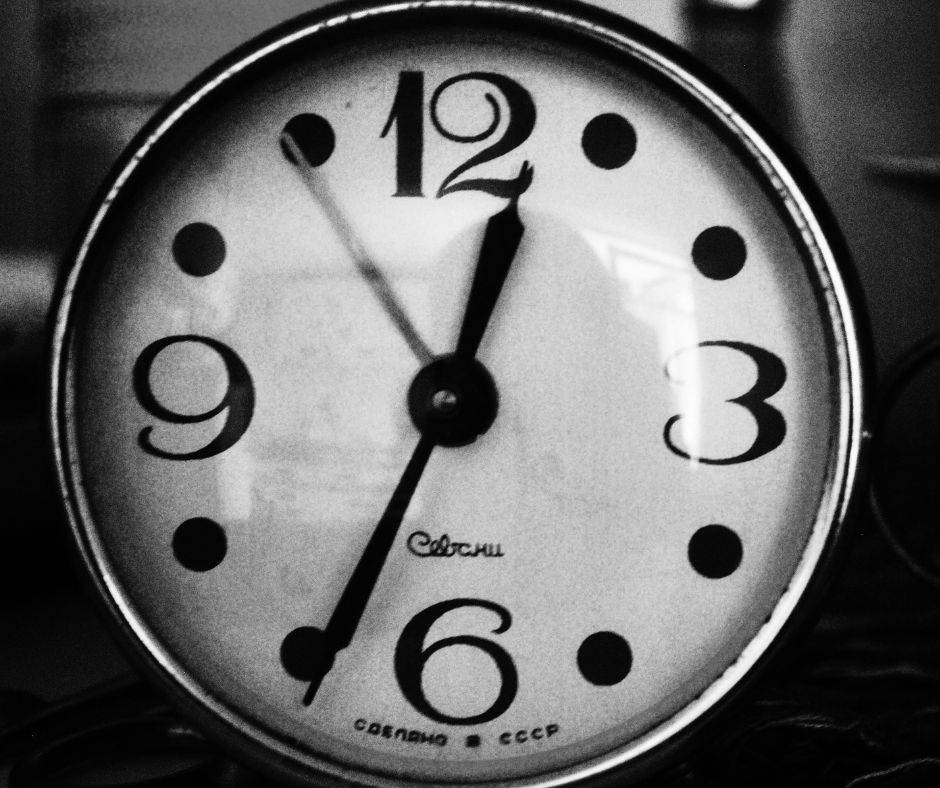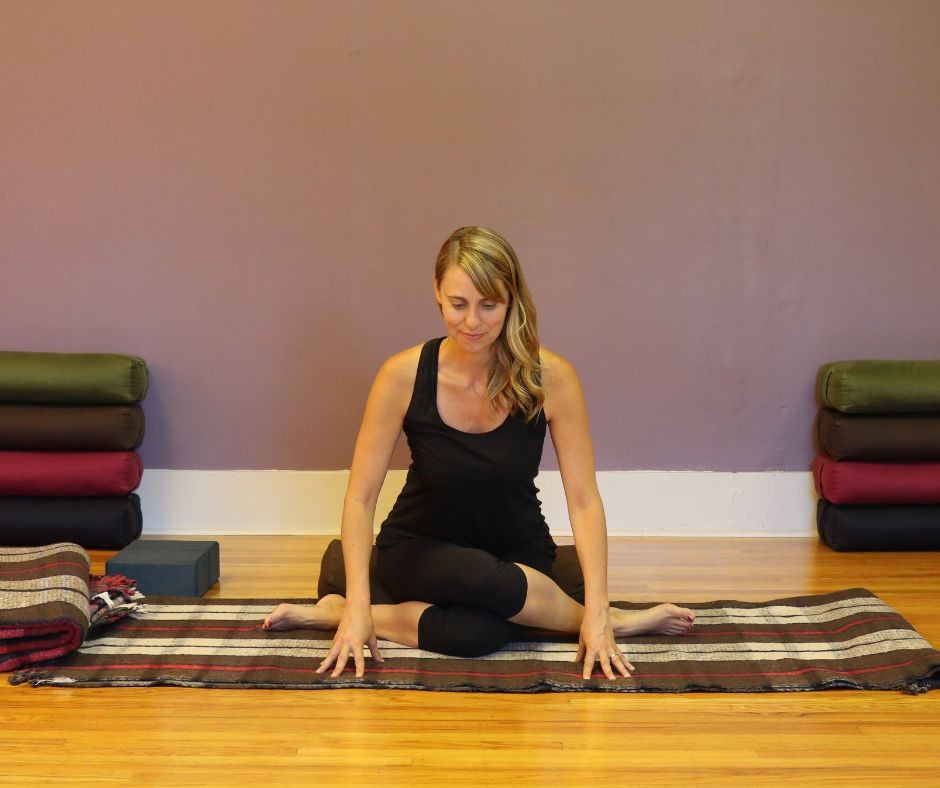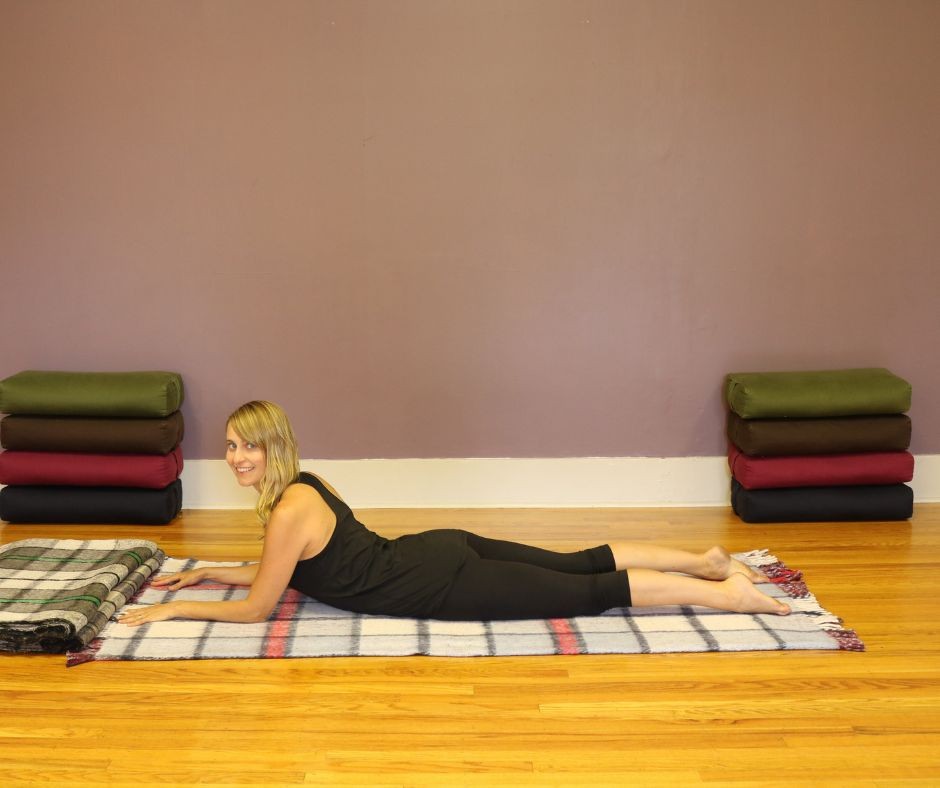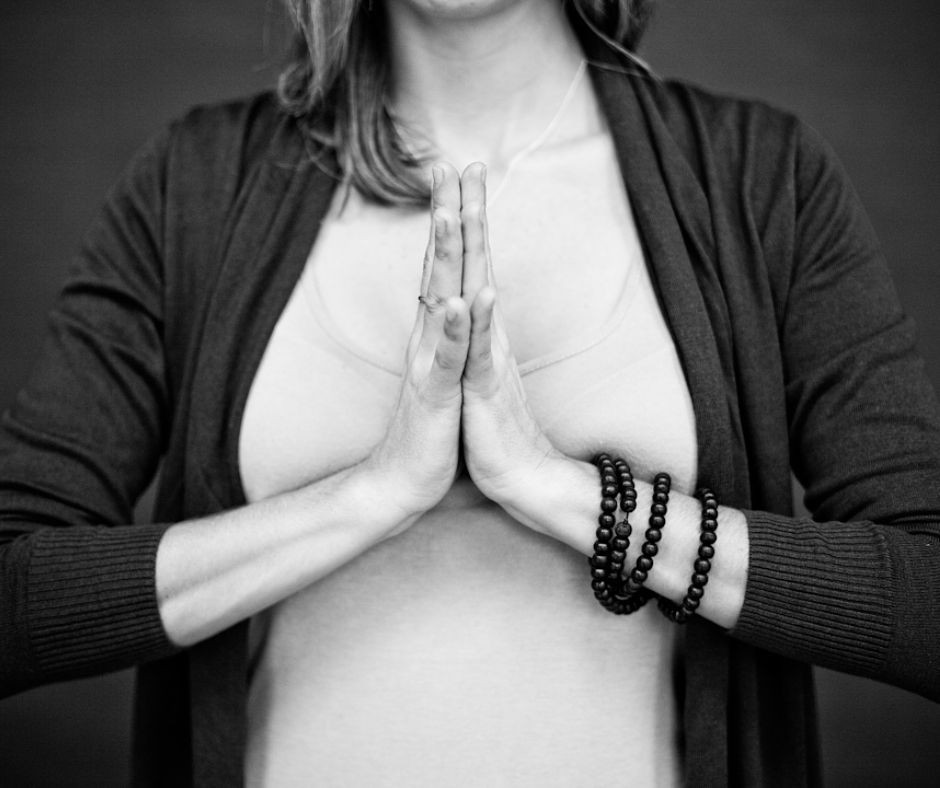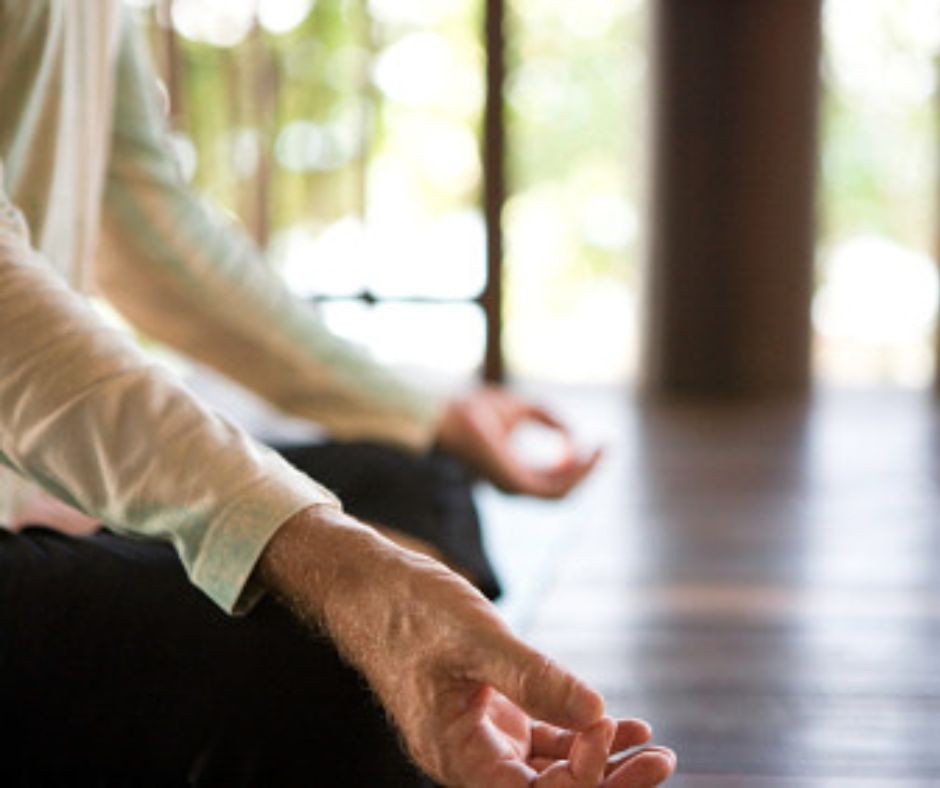Many people suffer from chronic upper back and shoulder tension – I frequently see it in my private acupuncture practice. This tension has many causes, including excess computer work and stress. For example, our shoulders tend to rise and tense when stressed or anxious. Simply spending time consciously releasing tension can be helpful and lead to less pain and greater freedom.
The following practice should be accessible for most yoga practitioners if done slowly and mindfully. However, it’s always important to prioritize safety to prevent injuries and promote a positive experience during yoga or movement practice. This is especially true if you have an acute injury or pain or are pregnant. Remember to check with a healthcare practitioner or qualified yoga instructor – they can provide guidance on modifications, alignment, and adjustments if needed.
For this practice, I recommend practicing on a soft surface. Choose a soft blanket or carpeted floor for the beginning of practice and a yoga mat for the active poses, which will provide stability and cushioning.
Yoga, particularly when combined with slow somatic movement, can effectively address tight shoulders and a tense upper back. The combination of stretching, strengthening, and mindful movement can help release muscle tension, improve flexibility and mobility, and increase body awareness. Slow somatic movement in yoga also encourages activating the parasympathetic nervous system, which is responsible for the body’s relaxation response.
In addition to traditional yoga poses, incorporating slow somatic movement into a yoga practice can be particularly beneficial for tension and pain. Somatic movement, similar to what we practice in this class, involves gentle, mindful movements that release muscular tension and retrain the nervous system, allowing for greater relaxation and mobility. Slowly and intentionally moving through a sequence of somatic movements, you can develop a greater sense of body awareness and identify and release areas of tension. This approach helps to reeducate the muscles, promoting healthier movement patterns and reducing chronic tightness.
During practice, listen to your body. Pay attention to your body’s signals and respect your limitations. Never force yourself into a movement that feels painful or uncomfortable. Yoga is about finding balance and honouring your body’s needs. Modify or skip movements as necessary. Sense and feel. Breathe consciously during practice. Avoid holding your breath or straining while attempting movements. Your breath should be smooth and relaxed, allowing you to relax into each movement.
The poses in this sequence are chosen because they specifically target the shoulders and upper back, promoting a release of tension and increased mobility in these areas. The gentle stretching and lengthening of the muscles in these poses can help alleviate tightness and improve posture, allowing for greater ease of movement and reduced discomfort.
I hope you enjoy!


